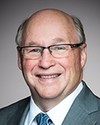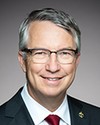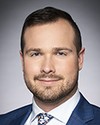Great. Thank you.
That's what your organizations are doing. From your presentations, which I greatly appreciated, I will just quickly paraphrase what I heard.
For example, Dr. Adem, you talked about 11,000 researchers.
Dr. Hewitt, you talked about 70,000 researchers.
Dr. Clifford and Ms. Aubrey, I suspect that you could give me similar numbers.
That's a huge number of researchers that we're looking at for research and to come up with their funding.
Now, the reality is that what I've heard from you today, Dr. Adem, is that you're the chair of a council that's overseeing all of these bodies. From what I'm hearing—I wish that we had more time with you, or that you'd been here at the very beginning of this study—you're doing that role in collaborations and in discussions. Why would you want to have another organization that creates another bureaucracy to tell you to do what you are already doing?




